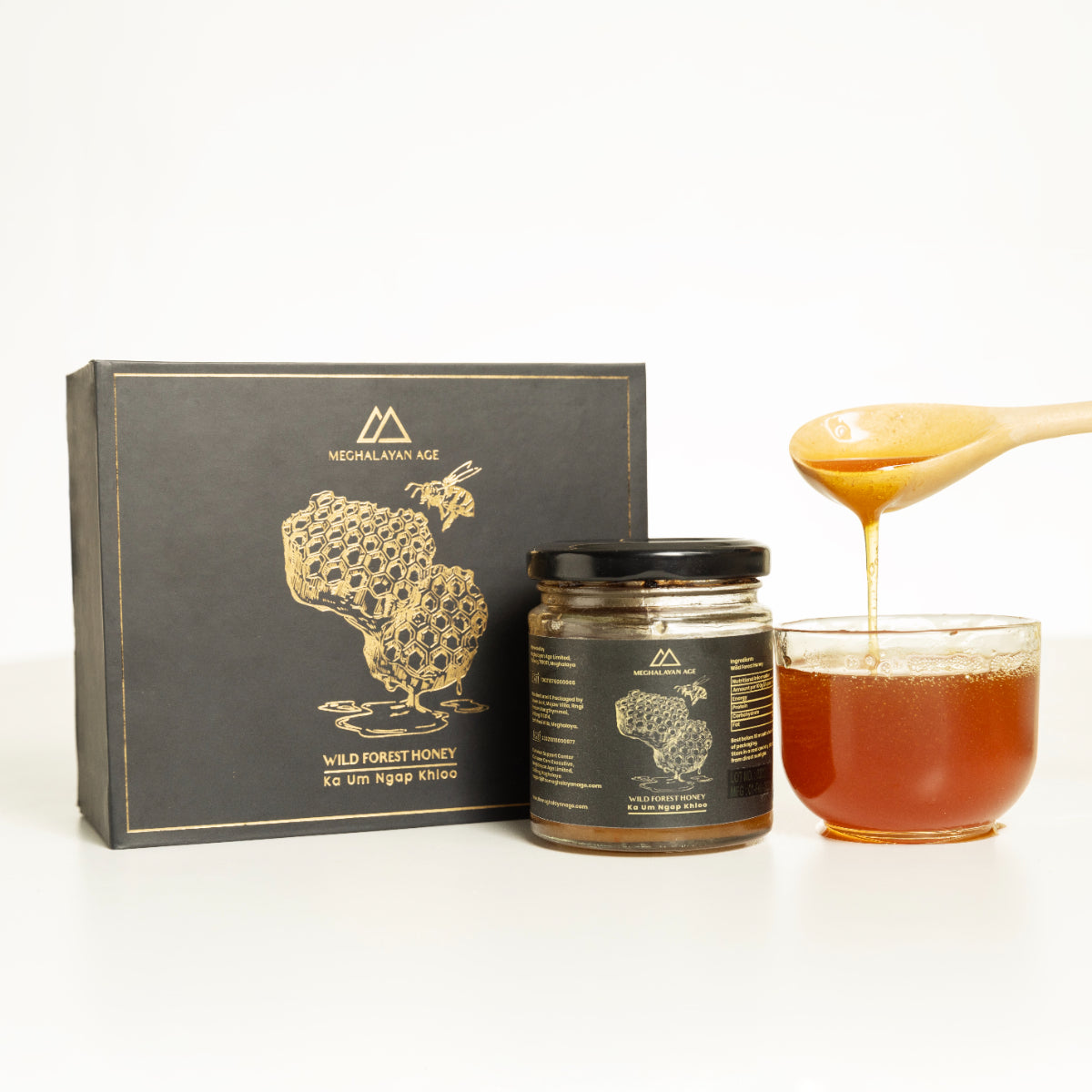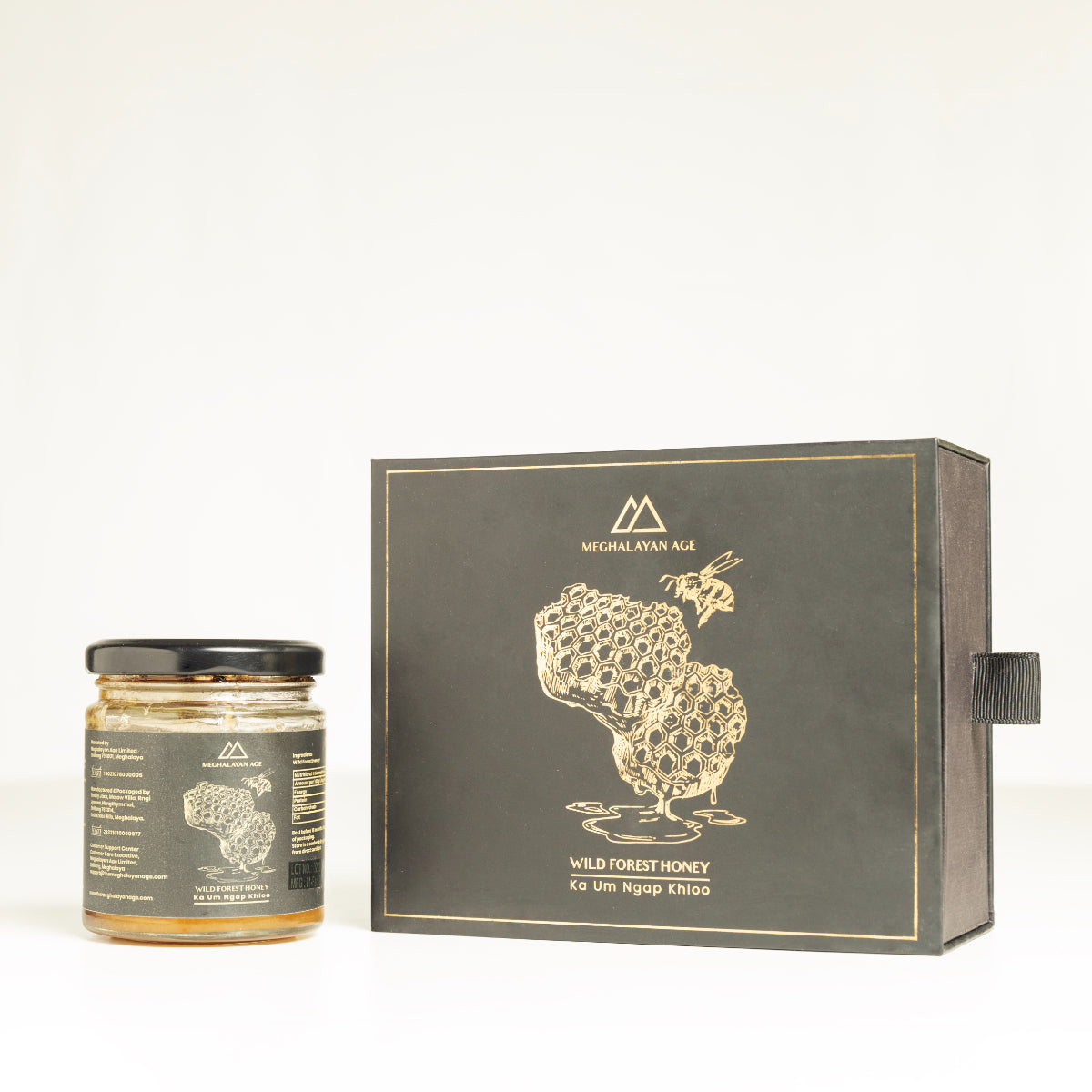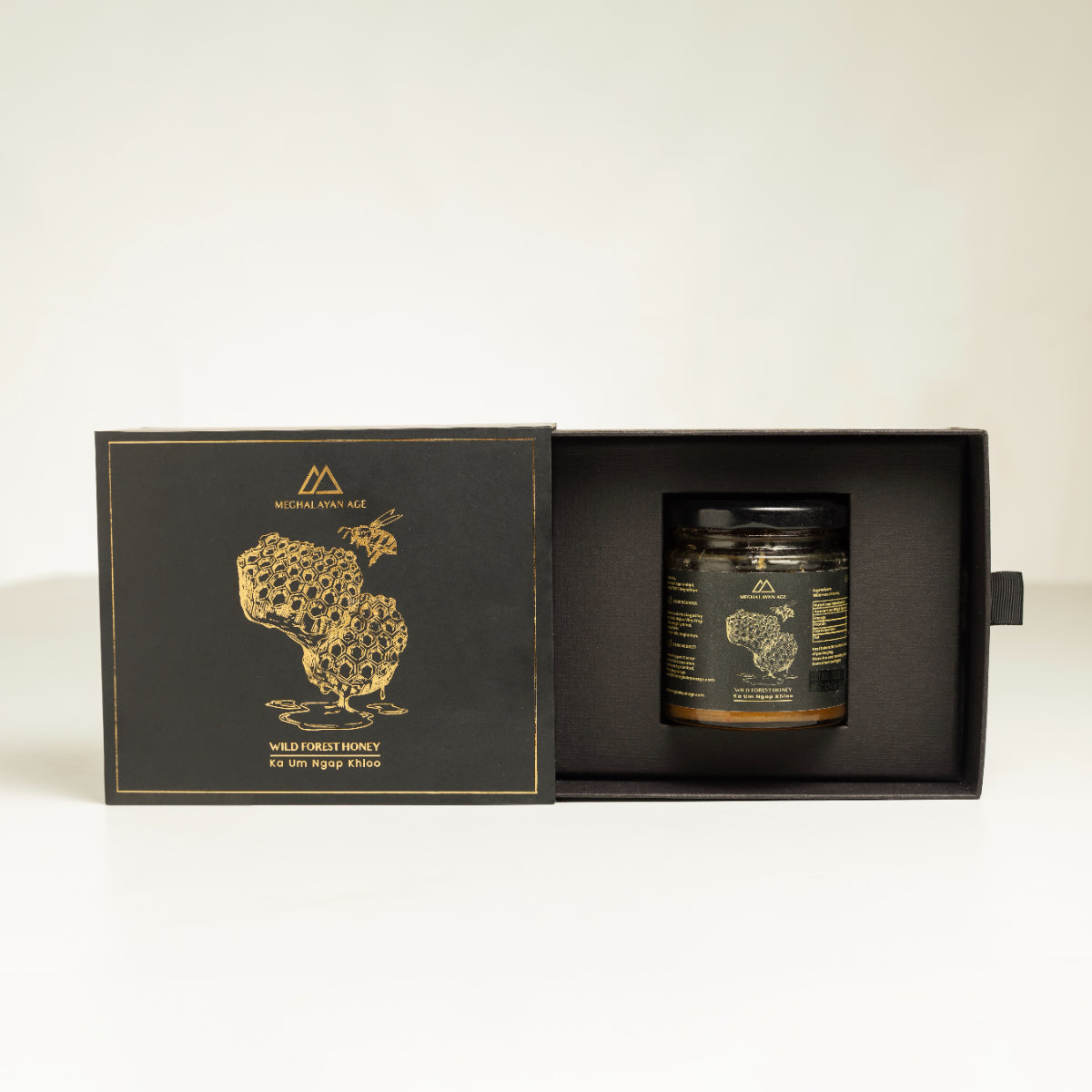1
/
of
3

Easy Returns
Return within 15 days of order delivery. See Ts&Cs

Exchange Available
Conditions Apply. See Ts&Cs

Free Shipping
On orders above Rs 999

Secure payments
100% secure payment gateway
Regular price
MRP:₹ 600.00
Regular price
Sale price
₹ 600.00
Unit price
/
per
Qty:
You can only add up to 10 products.
Couldn't load pickup availability
Product Details
Product Details
Local Name: Ka Um Ngap Khloo
Meghalayan Age's Wild Forest Honey is 100% organic, raw, natural, and multi-floral. Harvested from wild honeycombs in the forest canopy near Barato Village, it is collected by skilled villagers who trek for days and climb tall trees to gather it. Free from additives, preservatives, and city pollution, this honey captures the pure essence of the forest—rich in diverse floral nectar and traditional wisdom.
Care Instructions
Care Instructions
- • Store honey in a cool, dry place.
- • Keep sealed and avoid refrigeration.
Manufacturing Process
Manufacturing Process






